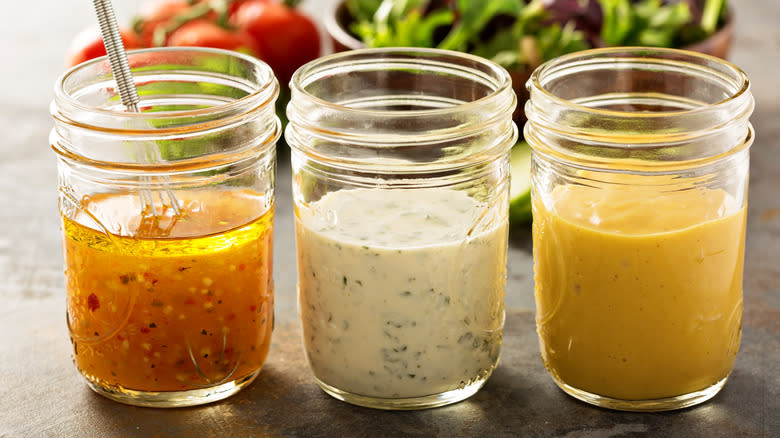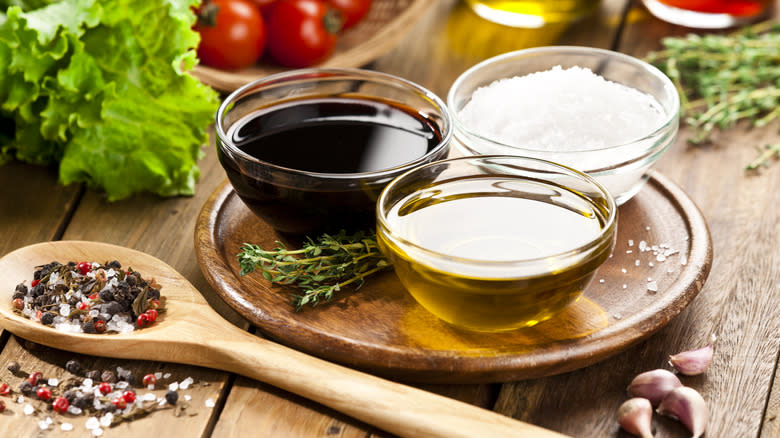A Hint Of Water Will Save Your Salad Dressing From That Bitter Zing

Skip the bottled stuff: Any self-respecting home cook knows that homemade dressing is an absolute necessity for making killer salads. You don't need many ingredients, either — oil, vinegar, and some herbs of your choosing will do the trick. Sometimes, though, getting the dressing just right can be a bit of a challenge. Too much vinegar will make it come out harshly acidic, but adding more oil runs the risk of breaking the emulsion and keeping it all from blending together nicely. The good news is, there's an easy fix for dressings that are too sharp in taste: Just add water.
It might sound ridiculously simple, but plenty of chefs swear by this little trick to attain perfectly balanced salad dressings that are zingy and flavorful but not overly aggressive. Adding just a tablespoon of water can tone down the acidity from ingredients like vinegar or lemon and help the flavors blend together harmoniously.
Read more: 20 Mistakes You Need To Avoid When Making Salad
A Splash Of Water Makes A Smoother-Tasting Vinaigrette

It might sound like a bad idea to literally water down the most flavorful part of a dish, but as long as you don't go overboard, it's not going to dull the taste. Most ingredients in salad dressings, especially vinaigrettes, bring pretty strong flavors — vinegar, citrus, herbs, onions, garlic, and so on. Adding a touch of water won't suppress all those flavors, it'll just tone down the acidic bite.
As for specific quantities, the most common rule of thumb is to add just a tablespoon of water per batch of dressing. But of course, it's all a matter of preference, so adjust according to your own taste. Start with less than you think you'll need. You can always add more water if that mouth-puckering edge is still too strong.
Not every dressing will require water. If you're using milder ingredients — or you just prefer a dressing with some bite to it — feel free to leave it out.
Dress Like A Pro

Once you have your dressing and other salad components made and perfected, do your hard work justice by tossing it both thoroughly and carefully. Pour the dressing in slowly, tossing as you go, to get every piece evenly dressed — don't do your delicious homemade dressing a disservice by just glopping it on so that some leaves end up soggy and others completely dry.
For optimal presentation and texture, try not to manhandle your ingredients. Anything particularly delicate and prone to bruising or smushing should go on at the end, after everything else has been tossed. That way you can avoid causing not-so-pretty brown spots on beautifully ripe fruits and veggies. Similarly, using metal tongs to toss a salad can damage even hardier vegetables, so opt for something softer like wooden serving spoons or even your (clean) hands to keep everything as crisp and fresh-looking as possible.
Of all the salad dressing mistakes you may be making, an excessively acidic dressing is blessedly fixable. And a zesty, savory, perfectly balanced dressing is too good to reserve for salad alone — once you nail your recipe, try putting your salad dressing on pasta, rice, or anything else that could use a sauce.
Read the original article on Daily Meal.

